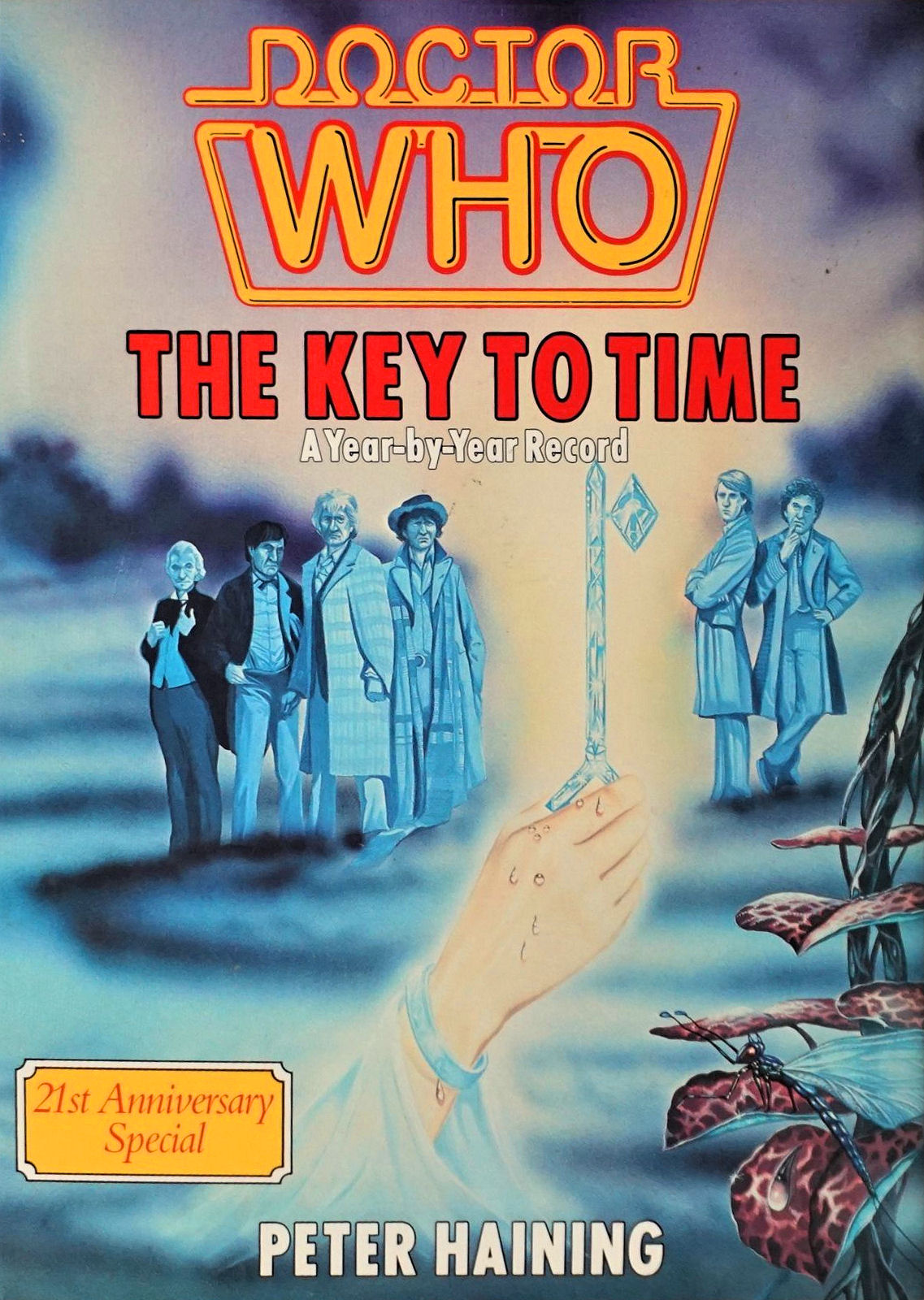 Story: Author Peter Haining once again toils away in the Who mines, trying to provide a chronological history of the development, production, and critical and public reaction to the BBC science fiction series Doctor Who.
Story: Author Peter Haining once again toils away in the Who mines, trying to provide a chronological history of the development, production, and critical and public reaction to the BBC science fiction series Doctor Who.
Review: The second of his sextet of Doctor Who books, “The Key To Time” is also probably Peter Haining’s second best, and it was downhill from there; later books like “The Doctor Who File” and “The Time Travellers’ Guide” were dismal recyclings of what appeared here and in “Doctor Who – A Celebration”. But the beginning of that decline can be seen in “The Key To Time” as well: the emphasis shifts from text to pictures here, and to avoid incurring a huge photo usage fee from the BBC and Equity (the British actors’ union), illustrations from fan artists were sought. These range from charming children’s crayon renderings to Tim Pieraccini’s slick pencil art to rudimentary computer art (keep in mind that the PC power available to many back then came in the form of the ubiquitous Commodore 64 and Apple II). Also included is one amazingly well-done pencil drawing of Tom Baker done in a very photorealistic style by a young Alister Pearson – who later went on to do a great many outstanding Doctor Who book covers in the late 1980s. But there are also just as many not-so-great drawings as well. It’s truly a mixed bag, but at least it’s an honest cross-representation of the talent that submitted works to the publishers. If there’s anything a bit grating about the artwork, it is that it sometimes seems to be placed at random with regard to the subject matter of the text on the page.
The text itself is a nice try at a chronology of the show’s production, but in that area I have to defer to the later works of Howe, Stammers and Walker. Subsequent histories have proven that many of the dates Haining gives here are wrong, some instances more wrong than others. The areas where Haining’s research does prove valuable is in the newspaper clippings, television appearances and other public reactions, several of which adorn the inner cover pages of the book. So much has been written and told about the production that it’s nice to see so much space devoted to what people thought about the series in its heyday – often with brutal honesty.
A nice book, but one that has been superceded in many ways by more recent works.
Year: 1984
Author: Peter Haining
Publisher: W.H. Allen
Pages: 264



